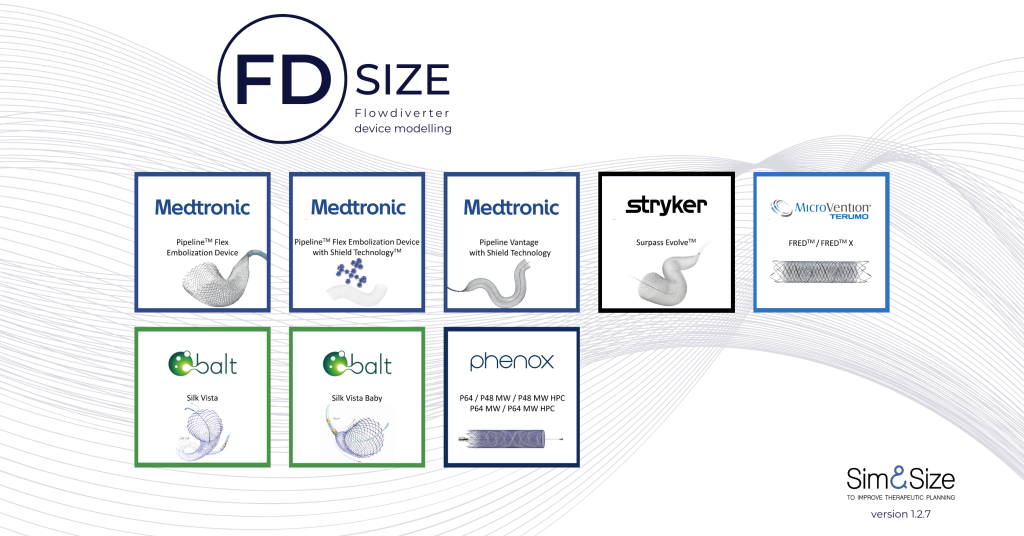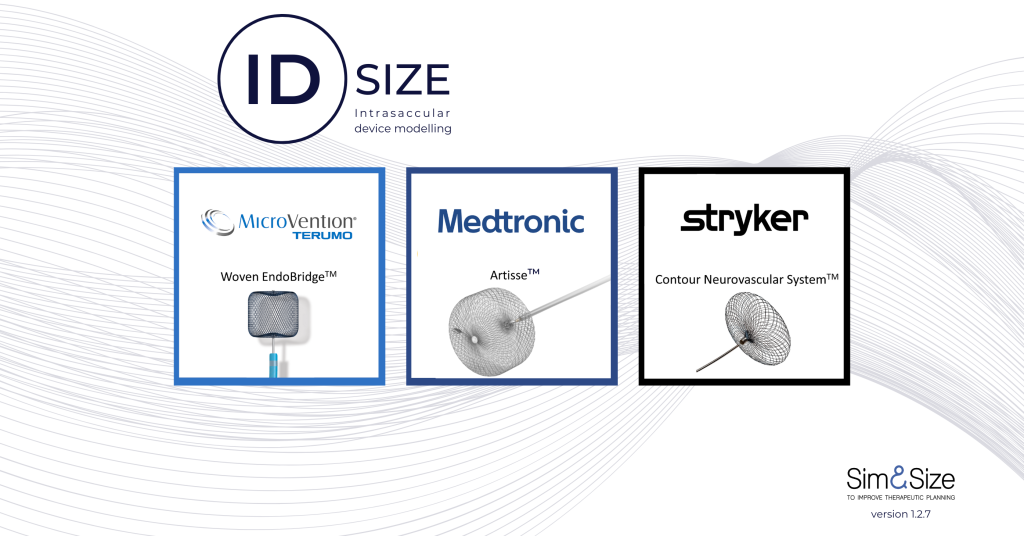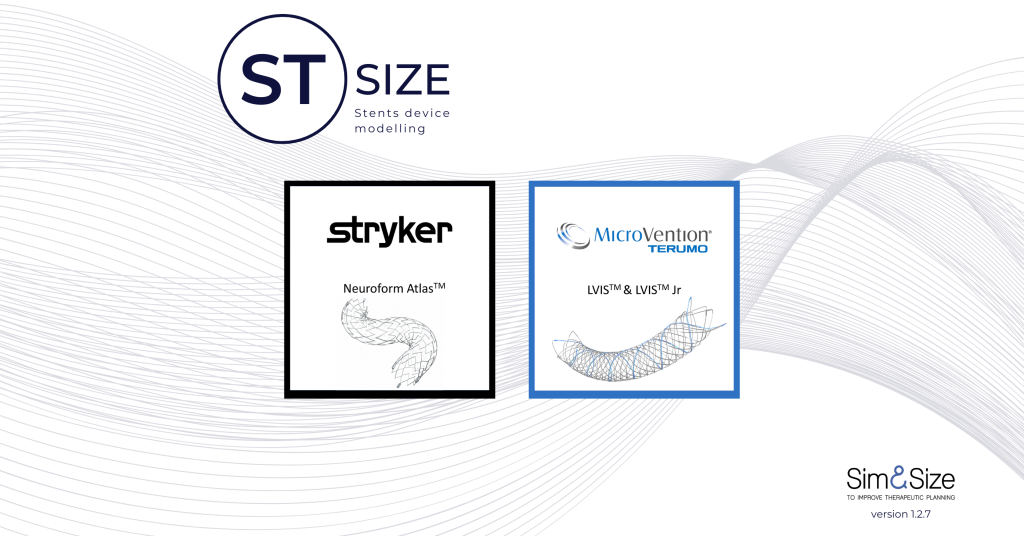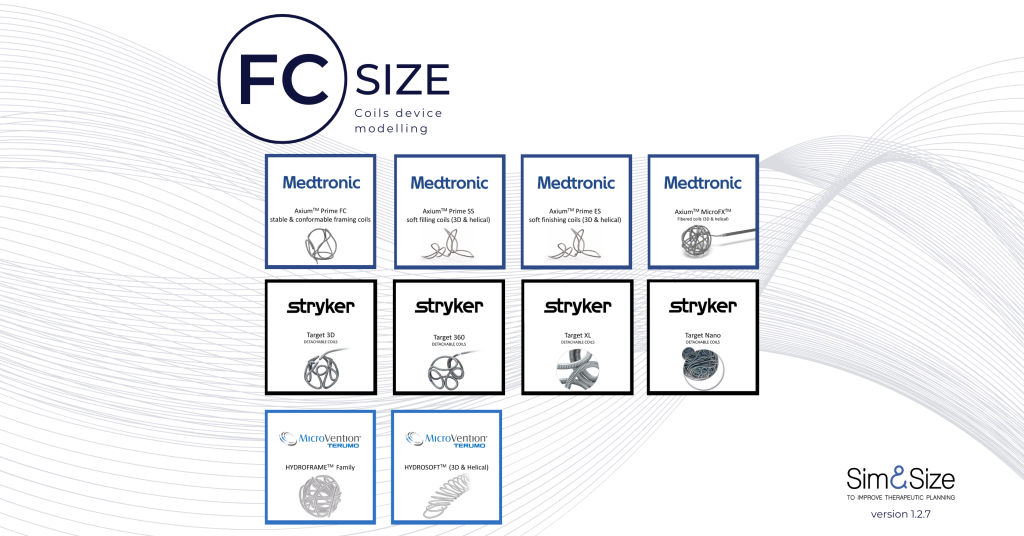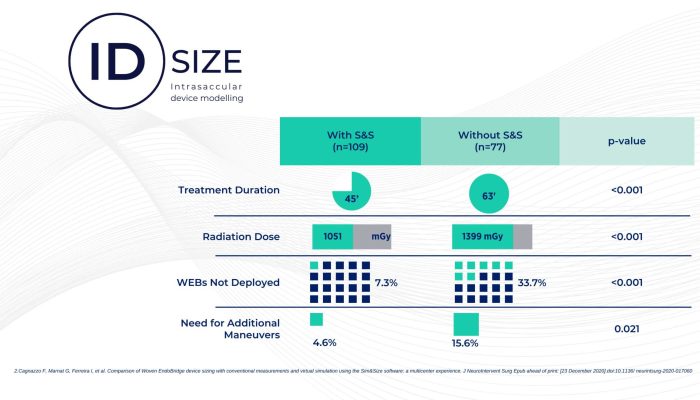Sim&Size
We offer ground-breaking solution that support cerebral aneurysm treatments using precise simulation.
Our commitment is to support your decision, empowering your vision and strategy
Sim&Size™ is designed to assist clinicians in visualizing and evaluating endovascular treatment strategies for cerebral aneurysms. By combining digital twin technology with AI-driven simulation, it enables the visualization of different therapeutic options—such as flow diverters, intrasaccular flow disruptors, coils, and support stents—tailored to the patient’s specific anatomy.
Optimized neurovascular procedures
Countries
Why Sim&Size™
Safety
Leverage anatomy-specific computational models to support your evaluation of implantable device options and enhance your confidence in treatment strategy assessment.
Efficiency
Discover a streamlined software solution that supports reliable clinical decision-making by helping reduce intervention time, radiation exposure, and device waste—enhancing procedural efficiency.*
Standardization
Use Sim&Size™ to support consistent, reproducible workflows tailored to patient anatomy and device specifics—helping harmonize your endovascular procedures.
ADVANTAGES
Secure
*Experience the accuracy of state-of-the-art simulation at your fingertips, using AI to analyze individual anatomy to optimize implant selection. Successful use of Sim&Size enables you to design personnalized care for every patient and enables safer treatments.
Streamline
*Discover a streamlined treatment planning process that provides precise and reliable models of the cases you want to treat. This not only reduces intervention time and radiation exposure but also minimizes unnecessary manipulation of devices or erroneously sized devices, which elevates operational efficiency.
Standardize
*Embark on a revolutionized procedure workflow with Sim&Size, meticulously engineered to guarantee your journey is not only seamless and efficient but also patient and device-specific. Our commitment extends to ensuring a standardized experience for patients, regardless of the treatment, placing your experience at the forefront of our innovation in endovascular practice.
Visualize. Compare. Optimize.
Experience the capabilities of the Sim&Size™, with its four specialized modules to simulate a wide range of neurovascular implants. Effortlessly visualize diverse therapeutic strategies, comparing device types and sizes and treatment combinations.
PARTNERSHIP ANNOUNCEMENT

Partnering for progress
In partnership with Siemens, we are joining forces and combining our expertise to shape the future of healthcare. Together, we are pushing the boundaries of innovation to deliver groundbreaking solutions for patients and healthcare professionals.
Explore Your Regional Options
Learn about the innovative treatment solutions available in your region by connecting with our representative today.
Get in touch
Interested in how Sim&Size™ can support your clinical practice? Connect with our team to learn more about regional availability and expert guidance.
Sim&Size™ is a medical device software intended for healthcare providers. Read the user manual carefully before use. Sim&Size complies with relevant applicable regulations. It should be noted that market authorization can differ depending on your location, so please contact us for more information. In accordance with the EU regulation, Sim&Size™ software is a class IIa medical device, bearing the CE marking n°0459, and is intended for healthcare providers. Read the instructions for use carefully before use.




